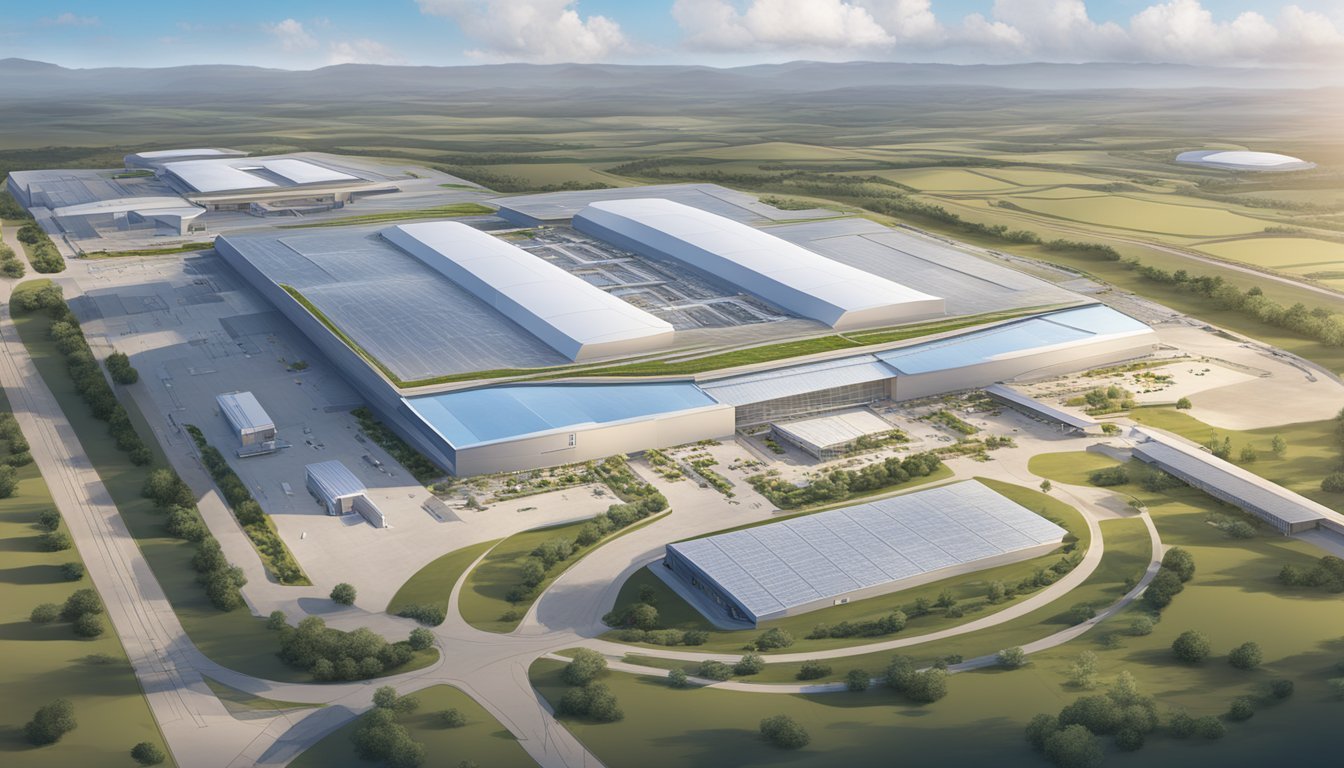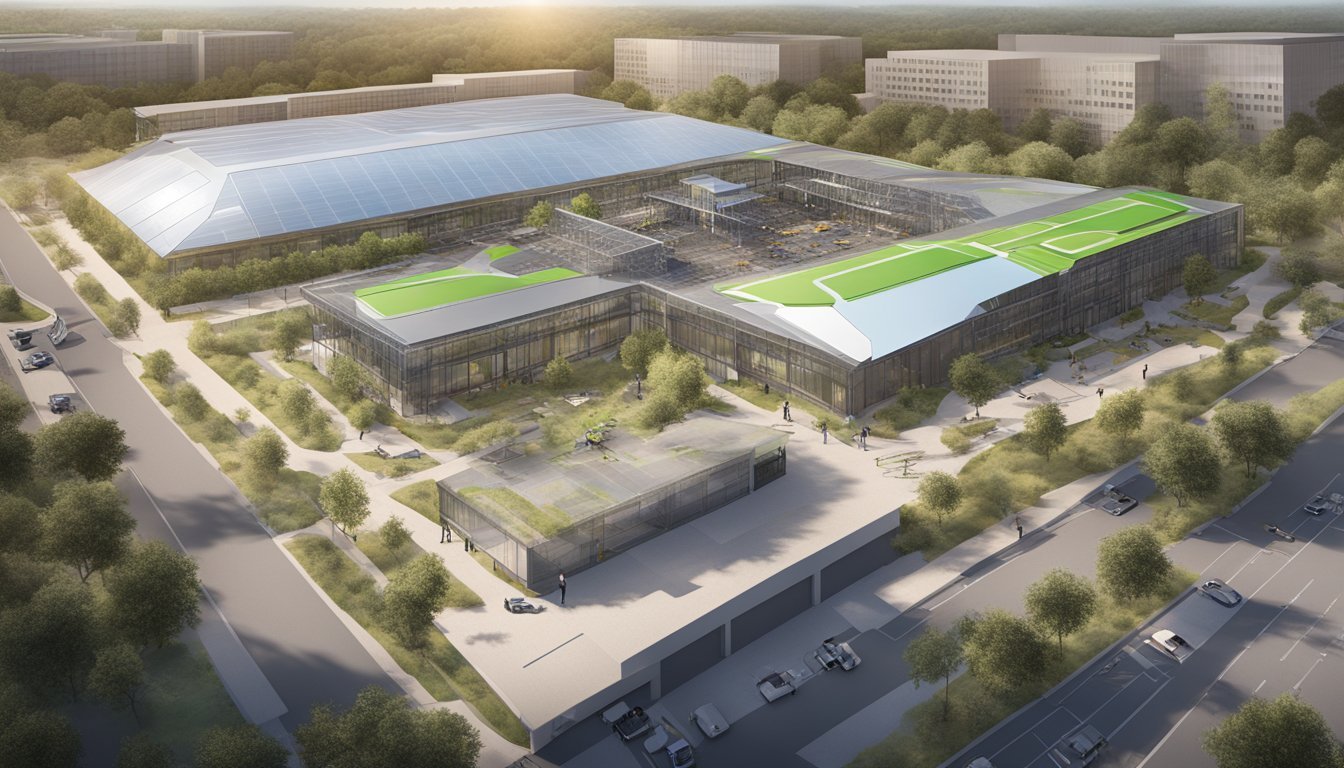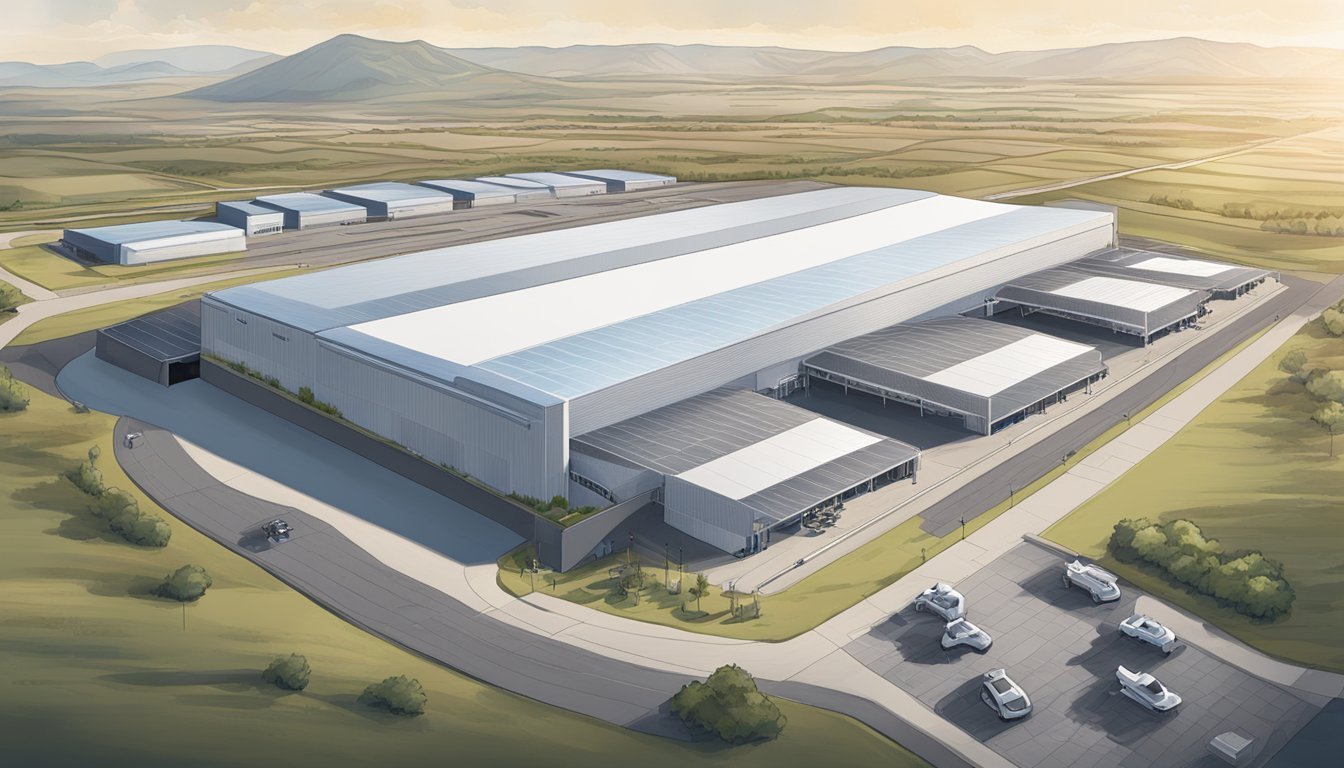Drone Footage Unveils Tesla's Expanding Giga Texas: A Glimpse into the Future of EVs!
Tesla's Gigafactory in Austin, Texas continues to captivate enthusiasts and industry watchers alike. Drone footage has become an invaluable tool for tracking the progress of this massive manufacturing facility. Recent aerial videos reveal a bustling site with ongoing expansion and increased activity, signaling Tesla's ambitious plans for the future.
The drone-captured imagery showcases the sheer scale of Giga Texas, as it's commonly known. Spanning over 2,500 acres, the factory is a testament to Tesla's commitment to ramping up production of its electric vehicles and other innovative products. The footage highlights newly constructed areas and provides glimpses of Tesla vehicles, including prototypes, being tested on the grounds.
These aerial views offer more than just a bird's eye perspective of the facility. They provide insights into Tesla's operations, from the layout of production lines to the logistics of material handling. As Giga Texas continues to evolve, drone footage remains a crucial source of information for those eager to stay updated on Tesla's latest developments in the heart of Texas.
The Genesis of Tesla Gigafactory Texas
Tesla's Gigafactory Texas emerged as a pivotal project for the company's expansion and production goals. Its development marked a significant milestone in Tesla's manufacturing capabilities and strategic positioning in the United States.
Choosing Austin
Tesla announced Austin as the location for its new Gigafactory in July 2020. The company selected a 2,100-acre site in Travis County, east of Austin-Bergstrom International Airport. This decision came after an extensive search and evaluation of potential sites across the country.
Austin's skilled workforce, business-friendly environment, and central location were key factors in Tesla's choice. The area's growing tech scene and quality of life also played roles in attracting Tesla to the region.
The local government offered tax incentives to secure the deal, highlighting the economic impact the factory would bring to the area.
Breaking Ground and Initial Development
Construction on Giga Texas began swiftly after the site selection. Tesla broke ground in July 2020, with Elon Musk personally visiting the site to oversee initial preparations.
The project moved at an impressive pace. Within months, the main structure began to take shape. Tesla employed innovative construction techniques to accelerate the building process.
Drone footage captured the rapid progress, showing the massive scale of the facility. The factory's footprint grew quickly, with multiple buildings and production areas emerging across the site.
Despite challenges posed by the global pandemic, construction continued steadily throughout 2020 and 2021.
Gigafactory's Strategic Importance to Tesla
Giga Texas holds immense strategic value for Tesla. The facility is designed to be the company's largest auto assembly plant in the world.
It serves as the primary production site for the Cybertruck, Tesla's highly anticipated electric pickup. The factory also produces Model Y vehicles for the eastern United States market.
Beyond vehicle assembly, Giga Texas houses battery cell production, further integrating Tesla's supply chain. This vertical integration aims to reduce costs and improve production efficiency.
The factory's central location in the U.S. optimizes Tesla's logistics network, potentially lowering transportation costs and delivery times for customers.
Giga Texas also symbolizes Tesla's commitment to American manufacturing, creating thousands of jobs and boosting the local economy.
Architectural Grandeur and Infrastructure
Tesla's Gigafactory Texas showcases innovative design and cutting-edge infrastructure. The facility's architecture blends form and function, while its construction milestones highlight rapid progress.
Design Philosophy
The Gigafactory's design emphasizes efficiency and sustainability. Its massive footprint houses state-of-the-art manufacturing equipment within a sleek, modern exterior. Large windows and skylights allow natural light to flood work areas, reducing energy costs and improving the work environment.
Tesla incorporated eco-friendly features throughout the facility. Solar panels line the roof, contributing to the factory's power needs. Rainwater collection systems and smart climate control further minimize environmental impact.
The layout optimizes production flow, with raw materials entering one end and finished vehicles emerging from the other. This streamlined approach maximizes efficiency and output.
Construction Milestones
Gigafactory Texas broke ground in July 2020, with construction progressing at a remarkable pace. By early 2021, the main structure was taking shape, with steel frameworks rising rapidly.
Drone footage captured key milestones, including the completion of the building's exterior in late 2021. The installation of production equipment began shortly after, with assembly lines and robotic systems put in place.
Tesla's ambitious timeline saw the factory produce its first vehicles in early 2022, less than two years after breaking ground. This rapid development showcases the company's commitment to swift expansion and innovation.
Environmental Considerations
Tesla's Austin Gigafactory has faced scrutiny over its environmental impact. The facility's proximity to the Colorado River and its sustainability practices have been key areas of focus.
Colorado River Proximity
The Tesla Gigafactory's location near the Colorado River raises concerns about water pollution. Reports indicate that toxic pollutants have been discharged into nearby waters. The Texas Commission on Environmental Quality has conducted multiple investigations into the factory's environmental practices.
These investigations have revealed violations related to waste management and pollution control. The factory's operations potentially affect the river's ecosystem and water quality. Local environmental groups have expressed worries about the long-term impacts on the Colorado River and surrounding habitats.
Sustainability Practices
Tesla has implemented some sustainability measures at its Austin facility. The company uses renewable energy sources to power parts of the factory. Solar panels and wind turbines contribute to reducing the plant's carbon footprint.
However, challenges remain in fully aligning operations with environmental standards. Air quality violations have been reported, similar to issues at Tesla's Fremont, California factory. Equipment designed to minimize emissions has reportedly malfunctioned multiple times.
Tesla has utilized a Texas state law to exempt the Gigafactory from certain Austin environmental regulations. This move has sparked debate about corporate responsibility and local environmental protection. The company faces pressure to improve its sustainability practices and address ongoing environmental concerns.
Manufacturing Excellence
Tesla's Gigafactory in Austin showcases cutting-edge production capabilities for vehicles and battery cells. The facility demonstrates Tesla's commitment to innovation and efficiency in manufacturing.
Tesla's Vehicle Production
The Austin Gigafactory focuses on producing the Model Y and Cybertruck. Recent drone footage reveals a significant increase in Cybertruck production, with approximately 380 units visible on-site. This surge indicates Tesla's accelerated manufacturing efforts for the highly anticipated electric pickup.
The factory utilizes advanced automation and robotics to streamline the production process. Assembly lines are designed for maximum efficiency, allowing for rapid scaling of output as demand grows. Tesla's manufacturing approach emphasizes continuous improvement and lean production principles.
Model Y production at Giga Austin has also ramped up noticeably. The factory's layout and equipment are optimized for high-volume production of this popular electric SUV.
Battery Cell Production Technology
Giga Austin incorporates Tesla's latest advancements in battery cell production. The facility houses dedicated areas for manufacturing the company's proprietary 4680 battery cells. These larger, more energy-dense cells are key to improving vehicle range and reducing costs.
Tesla's battery production lines utilize innovative dry electrode technology, which eliminates the need for toxic solvents in the manufacturing process. This approach not only enhances environmental sustainability but also increases production efficiency.
The integration of battery cell production with vehicle assembly allows for tighter quality control and reduced logistics costs. Tesla's vertical integration strategy at Giga Austin exemplifies the company's focus on optimizing the entire manufacturing ecosystem.
Drone Imagery of Gigafactory
Aerial footage has played a crucial role in documenting the rapid development of Tesla's Gigafactory in Austin, Texas. Drones have captured stunning visuals of the massive facility's construction and expansion over time.
Capturing the Expansion
Drone videos have provided a bird's-eye view of Tesla's Gigafactory Texas, showcasing its immense scale and progress. The footage reveals the facility's massive footprint and ongoing construction activities.
Time-lapse videos compiled from drone shots illustrate the factory's swift growth. These visuals highlight new buildings, expanded parking areas, and increased activity on-site.
Nighttime drone footage offers a unique perspective, displaying the illuminated facility against the dark Texas sky. The lit-up complex demonstrates the 24/7 nature of Tesla's operations at Giga Texas.
Joe Tegtmeyer's Contributions
Joe Tegtmeyer has become well-known for his consistent drone coverage of the Gigafactory. His regular flights over the site have created a valuable visual record of the facility's evolution.
Tegtmeyer's footage captures detailed views of production areas, solar panel installations, and vehicle staging zones. His work allows Tesla enthusiasts and investors to track the factory's progress remotely.
His drone videos often reveal new developments before official announcements, such as changes to the building layout or the arrival of new equipment. This timely information has made Tegtmeyer's content highly sought-after in Tesla-focused communities.
Economic and Workforce Impact
Tesla's Giga Texas facility has generated significant economic activity in the Austin area. The company reports that the plant has brought in $2 billion in economic impact since opening.
Job creation has been a major benefit of Giga Texas. Tesla initially promised 5,000 new jobsfor the region. Current figures indicate the facility has supported over 15,000 jobs in Travis County.
The workforce impact extends beyond direct Tesla employment. Of the 15,000 jobs, approximately 1,000 are direct Tesla positions. The remaining 14,000 stem from secondary economic effects in the area.
Tesla's presence has attracted partners and suppliers, creating a broader economic ecosystem. This has led to increased economic activity and job opportunities across various sectors in Central Texas.
The company made commitments to hire locally as part of its tax incentive agreement. At least 50% of the initial 5,000 jobs were to be filled by Travis County residents.
Tesla's economic influence continues to grow as production ramps up at Giga Texas. The facility has become a significant driver of economic development in the Austin region.







